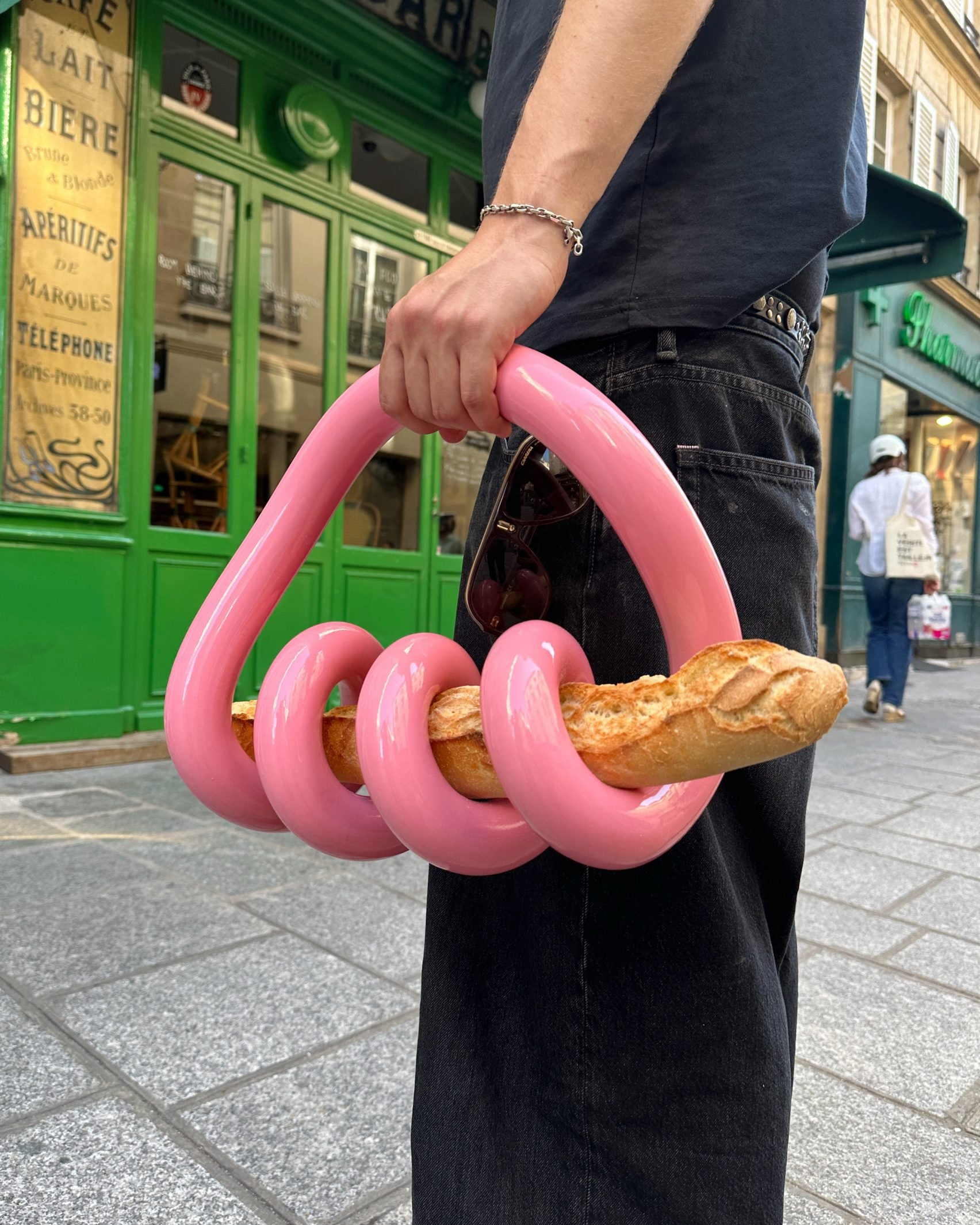
•
10 min read
A Pink Spiral, a Baguette, and a Small Rebellion Against Optimization
A Pink Spiral, a Baguette, and a Small Rebellion Against Optimization
I found this photo buried in my phone the other day. A baguette holder by Gustaf Westman. A chunky, candy-pink swirl hugging a single loaf of bread like it was some kind of sacred object.
I think I saved it in one of those moments when the internet feels like a fever dream. When scrolling turns into spiraling, and suddenly you’re deep into something absurd, delightful, and strangely comforting. A portal. A breadcrumb trail of nonsense. And then, there it was. A baguette holder.
At first, I laughed. Then I stared. And then I thought: this is exactly the kind of design that makes me feel something.
It brought me back to a concept once taught to me by Andrew McCarthy in class: Chindōgu. A Japanese design philosophy that embraces the “almost useful.” Objects that function, technically, but are far too ridiculous, inconvenient, or unnecessary to truly solve anything. The point isn’t to be clever. The point is to stretch the boundaries of what design is supposed to be.
Not useless. Just useful in a different way
This baguette holder doesn’t help you carry bread more efficiently. It doesn’t extend its shelf life. It’s not minimalist or ergonomic or optimized. But it does invite a second look. It does make you smile. And it does treat something as mundane as a baguette with an almost ceremonial respect.
That, to me, is a kind of usefulness too.
In a world where design is so often about solving, streamlining, optimizing, removing friction, objects like this feel like a small rebellion. A reminder that confusion, joy, and unnecessary beauty are valid outcomes. That designing for delight is enough.
This spiral of pink resin isn’t trying to change the world. It’s just interrupting the scroll. Nudging us out of autopilot. And maybe, in its own absurd little way, that’s exactly what we need more of.
A small rebellion. Hidden in plain sight.

